
The Sphecinae is a subfamily of the digger wasp family Sphecidae.

Pison is a cosmopolitan genus of wasps within the family Crabronidae. The genus comprises 145 described species, although many species, especially in South America remain undescribed.

Pemphredonidae is a family of aphid wasps formerly treated as the subfamily Pemphredoninae. There are 19 genera and 556 described species in the family.
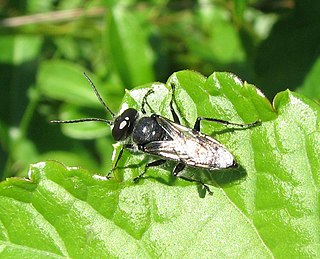
Astata is a cosmopolitan genus of solitary predatory wasps in the family Astatidae. They are known to prey on adults and nymphs of Pentatomidae. Astata is the largest genus in this subfamily, and is identified by features of its wing venation. The males of this genus and the related genus Dryudella have very large compound eyes that broadly meet at the top of the head.
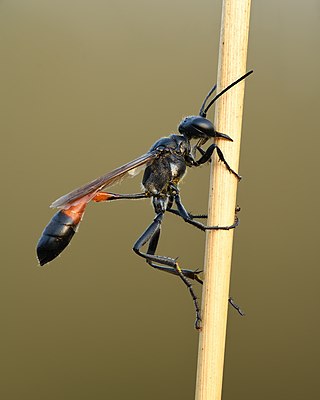
Ammophila is the type genus of the subfamily Ammophilinae of the hunting wasp family Sphecidae. Ammophila is a large and cosmopolitan genus, with over 200 species, mostly occurring in the warmer regions of all continents apart from Antarctica.

Ammophilinae is a subfamily of thread-waisted wasps in the family Sphecidae. There are about 6 genera and more than 320 described species in Ammophilinae.
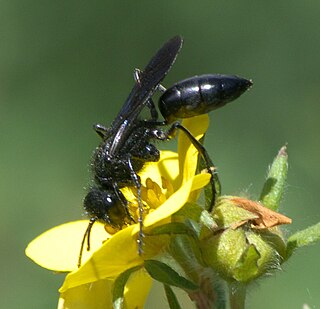
Podalonia is a genus of parasitoidal wasps in the family Sphecidae.
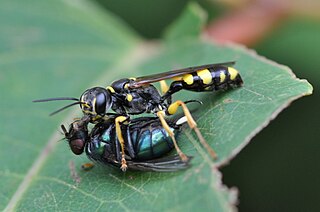
Mellinus is a genus of wasps in the family Mellinidae. The species are found in the Palearctic, Nearctic, the Neotropics and the Orient. 16 species are known

Aha is a genus of wasp. As of 2017, it consists of two species: A. ha, and A. evansi, and is endemic to Australia. The American entomologist Arnold S. Menke named and circumscribed the genus in 1977 for his newly-described species A. ha and A. evansi.
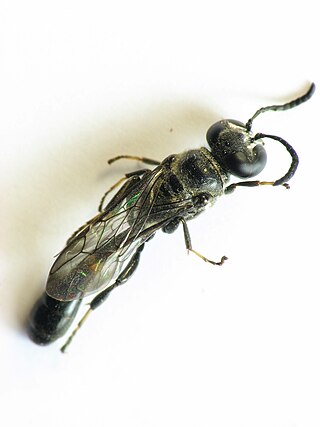
Trypoxylini is a tribe of traditional Sphecidae in the family Crabronidae. There are at least 840 described species in Trypoxylini.

Melanoplini is a tribe of spur-throated grasshoppers in the family Acrididae. There are about 19 genera and more than 200 described species in Melanoplini, all in North America. Their biogeography shows that many species in the tribe have descendants from the Eocene epoch and Miocene epoch.

Oxybelini is a tribe of square-headed wasps in the family Crabronidae. There are about 15 genera and more than 440 described species in Oxybelini.

Psenidae is a family of aphid wasps in the superfamily Apoidea formerly treated as the tribe Psenini. There are 12 genera and at least 485 described species of Psenidae.
Palmodes is a genus of thread-waisted wasps in the family Sphecidae. There are more than 20 described species in Palmodes.

Larrini is a tribe of square-headed wasps in the family Crabronidae. About 15 genera and more than 1,300 described species are placed in the Larrini.
Palarini is a tribe of square-headed wasps in the family Crabronidae. There are at least 2 genera and more than 30 described species in Palarini.














